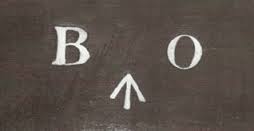In 1803, the short lived Peace of Amiens came to an end when the French, under Napoleon, declared war on Great Britain. The Napoleonic War was to last until 1814 when Napoleon was finally defeated by Allied armies including the Austrians, Russians, Prussians and British and abdicated. Following the French occupation of Hanover, many officers and soldiers fled to Britain to continue the fight against the King’s enemies. As King George III was also the Elector of Hanover, they were incorporated into the British Army. Initially formed as a Light Infantry Battalion it rapidly expanded to that which became known as the King’s German Legion. Eventually, the Legion had 5 regiments of cavalry, 2 Battalions of Light and 8 of Line Infantry as well as 16 Companies of Artillery and 8 of Engineers as well as a nucleus of a staff .
The KGL served with distinction in most of the European campaigns of the Napoleonic War and were known for their steadiness in battle and their good discipline.
The tables below illustrate the expansion of the KGL, both in the number of units and their size.
Table 1: Units of the King’s German Legion
| 1803 | 1805 | 1808 | 1810 | 1811 | 1812 | 1813 | 1814 | 1815 | |
| Staff | |||||||||
| Brigade Majors | 4 | 8 | 9 | 8 | 8 | 7 | 7 | 6 | |
| Military Commissaries | 1 | 1 | 1 | 1 | 1 | 1 | 1 | ||
| Hospital staff | |||||||||
| Dep Insp of Hospitals | 1 | 1 | |||||||
| Purveyor | 1 | 1 | |||||||
| Dep Purveyor | 1 | 1 | |||||||
| Surgeons | 3 | 3 | |||||||
| Apothecary | 1 | 1 | |||||||
| Depot Companies | 1 | 1 | 1 | 1 | 1 | 1 | |||
| Garrison Companies | 1 | 1 | 1 | 1 | 1 | ||||
| Cavalry | 1803 | 1805 | 1808 | 1810 | 1811 | 1812 | 1813 | 1814 | 1815 |
| Cavalry Regt | 1 | ||||||||
| Regt of Dragoons | 2 | 2 | 2 | 2 | 2 | ||||
| Hussars | 3 | 3 | |||||||
| Light Dragoons | 1 | 3 | 3 | 3 | 3 | 3 | 2 | 2 | |
| Infantry | 1803 | 1805 | 1808 | 1810 | 1811 | 1812 | 1813 | 1814 | 1815 |
| Light Infantry Battalions | 1 | 2 | 2 | 2 | 2 | 2 | 2 | 2 | 2 |
| Line Infantry Battalions | 4 | 8 | 8 | 8 | 8 | 8 | 8 | 8 | |
| Engineer Companies | 2 | 3 | 3 | 4 | 6 | 7 | 8 | 8 | |
| Artillery Companies | 7 | 12 | 12 | 12 | 12 | 12 | 14 | 16 |
Table 2: Officer Establishment of the Units of The King’s German Legion 1805-1815
| 1805 | 1808 | 1810 | 1811 | 1812 | 1813 | 1814 | 1815 | |
| Cavalry | ||||||||
| Cavalry Regiment | ||||||||
| Col Commandant | 1 | |||||||
| Lt Col | ||||||||
| Maj | 1 | |||||||
| Capt | 7 | |||||||
| Lt | 9 | |||||||
| Cornet | 9 | |||||||
| Regt of Dragoons | 1805 | 1808 | 1810 | 1811 | 1812 | 1813 | 1814 | 1815 |
| Col Commandant | 1 | 1 | 1 | 1 | 1 | |||
| Lt Col | 1 | 1 | 1 | 1 | 1 | |||
| Maj | 2 | 2 | 2 | 2 | 2 | |||
| Capt | 8 | 8 | 8 | 8 | 11 | |||
| Lt | 9 | 9 | 9 | 9 | 10 | |||
| Cornet | 8 | 8 | 7 | 7-8 | 7 | |||
| Light Dragoons | 1805 | 1808 | 1810 | 1811 | 1812 | 1813 | 1814 | 1815 |
| Col Commandant | 1 | 1 | 1 | 1 | 1 | 1 | 1 | 1 |
| Lt Col | 1 | 1 | 1 | 1 | 1 | 1 | 1 | 1 |
| Maj | 1 | 2 | 2 | 2 | 2 | 2 | 2 | 2 |
| Capt | 10 | 8 | 8 | 8 | 8-10 | 10 | 10 | 10 |
| Lt | 9 | 8-9 | 9 | 9 | 8-10 | 11 | 11 | 11 |
| Cornet | 1 | 6-8 | 8 | 8 | 8-10 | 10 | 10 | 10 |
| Hussars | 1805 | 1808 | 1810 | 1811 | 1812 | 1813 | 1814 | 1815 |
| Col Commandant | 1 | 1 | ||||||
| Lt Col | 1 | 1 | ||||||
| Maj | 2 | 2 | ||||||
| Capt | 10-12 | 10-12 | ||||||
| Lt | 11-13 | 11-13 | ||||||
| Cornet | 8-12 | 9-13 | ||||||
| Infantry | 1805 | 1808 | 1810 | 1811 | 1812 | 1813 | 1814 | 1815 |
| Light Infantry Battalions | ||||||||
| Col Commandant | 1 | 1 | 1 | 1 | 1 | 1 | 1 | 1 |
| Lt Col | 1 | 1 | 1 | 1 | 1 | 1 | 1 | |
| Maj | 1 | 2 | 2 | 2 | 2 | 2 | 2 | 2 |
| Capt | 6-7 | 8 | 8 | 8 | 8 | 10 | 10 | 10 |
| Lt | 6-8 | 17-18 | 17 | 16-17 | 16-17 | 21 | 21 | 21 |
| Ensign | 6-7 | 7-8 | 8 | 8-9 | 7-8 | 8 | 10 | 10 |
| Line Infantry Battalions | 1805 | 1808 | 1810 | 1811 | 1812 | 1813 | 1814 | 1815 |
| Col Commandant | 0-1 | 0-1 | 1 | 1 | 1 | 1 | 1 | 1 |
| Lt Col | 0-1 | 1 | 1 | 1 | 1 | 1 | 1 | 1 |
| Maj | 1-2 | 2 | 2 | 2 | 2 | 2 | 2 | 2 |
| Capt | 8 | 8 | 8 | 8 | 8 | 10 | 10 | 10 |
| Lt | 8 | 16 | 17 | 17 | 17 | 21 | 21 | 21 |
| Ensign | 8 | 8 | 8 | 8 | 6-9 | 4-6 | 4-6 | 10 |



